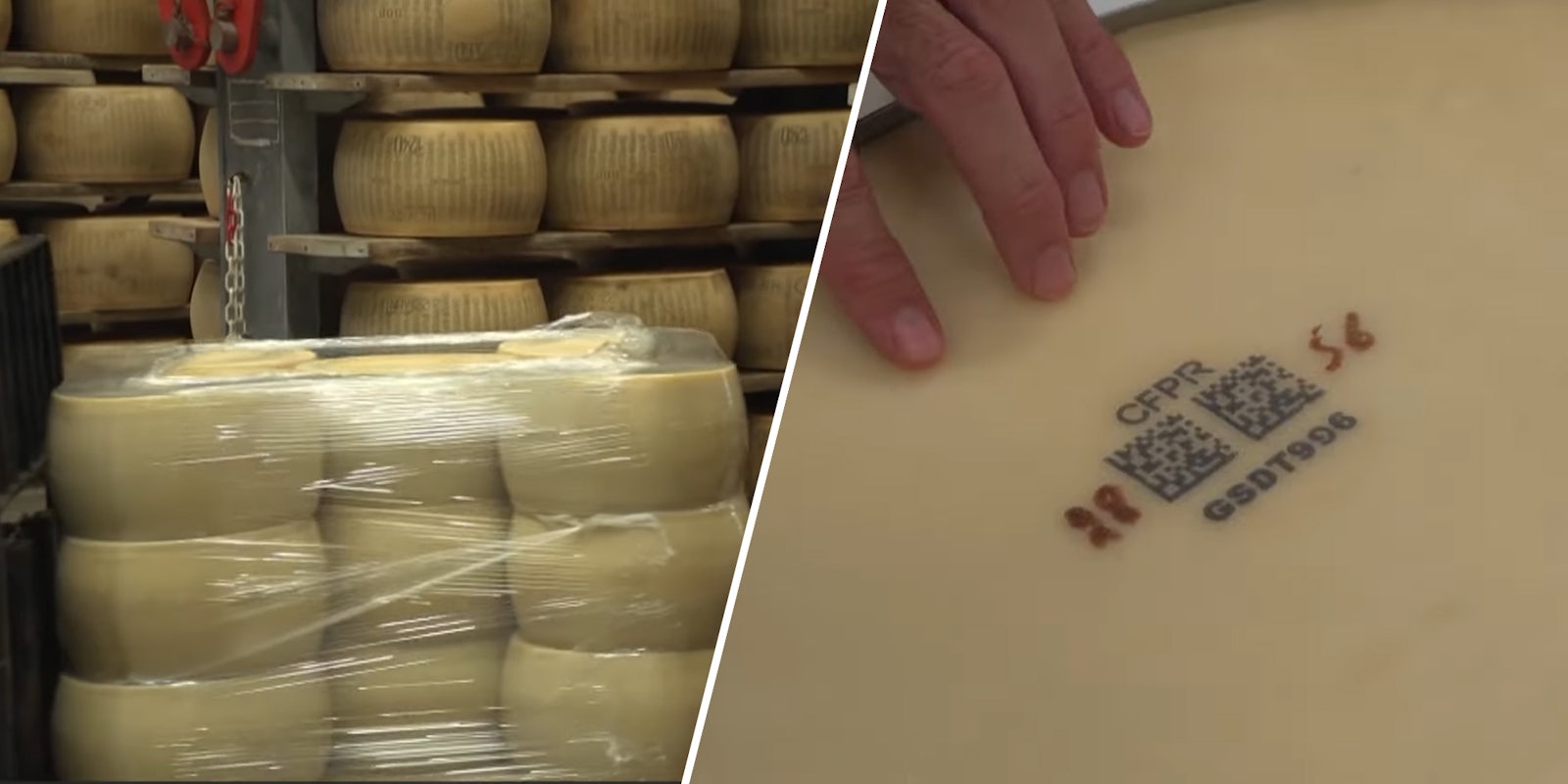In each edition of web_crawlr we have exclusive original content every day. On Mondays our Tech Reporter Mikael Thalen debunks the most wild conspiracy theories swirling around the web in his “One Dumb Conspiracy” column. If you want to read columns like this before everyone else, subscribe to web_crawlr to get your daily scoop of internet culture delivered straight to your inbox.
Conspiracy theorists are sounding the alarm over the belief that the government could be tracking them through microchips hidden in cheese. But the crazy part is, at least some of the story is true.
Screenshots circulating across social media purport to show news articles explaining how Italian cheese makers are embedding microchips into their 90-pound Parmesan wheels in order to stop counterfeits.
“Next Time You Buy Parmesan, Watch Out for the Microchip,” a headline attributed to The Wall Street Journal reads.
Conspiracy theorists have seen the screenshots as proof that the alleged microchips will be used to surveil them once they have been consumed.
“Just, why edible microchips?” one person on X asked. “That’s shady AF.”
Others argued that the cheese industry has opted to microchip the populace in lieu of simply cracking down on cheese counterfeiters.
“Microchip technology has to be used for something? How about in your food to protect you from knock off cheese?” another said. “Instead of going after the criminals, they chip your food.”
Believe it or not, the headline and story said to be from The Wall Street Journal is real. Italian cheese makers really are putting microchips in their cheese to fight against counterfeits.
But as is often the case, the story isn’t as nefarious as conspiracy theorists claim.
For starters, a single microchip is used on each 90-pound cheese wheel. Chances are, you aren’t buying and consuming that amount of cheese. So don’t expect there to be microchips in your next slice.
Secondly, the microchips are the same size as a grain of sand and are embedded into the cheese’s food-safe casein label. When a company or restaurant purchases the cheese, they use a laser reader to scan the wheel’s unique serial ID to verify its authenticity.
Also, the microchips are edible. The idea that the government or Big Cheese will go around with a laser reader in an attempt to scan a minuscule chip while it’s still inside your digestive system is far-fetched. It would be much easier for them to track your phone.
The company behind the chip, Chicago-based p-Chip, also notes that people can’t be tracked after ingesting the chip.
“We don’t want to be known as the company accused of tracking people,” p-Chip Chief Technology Officer Bill Eibon told the Wall Street Journal. “I ate one of the chips and nobody is tracking me, except my wife, and she uses a different method.”
So to all those who consume it, continue enjoying your cheese!
Why it matters
As technology advances, such innovations in the food industry will undoubtedly continue. But those advances will also be met with conspiracy theories. While skepticism isn’t unwarranted, researching such technologies will help you rise above the noise.



